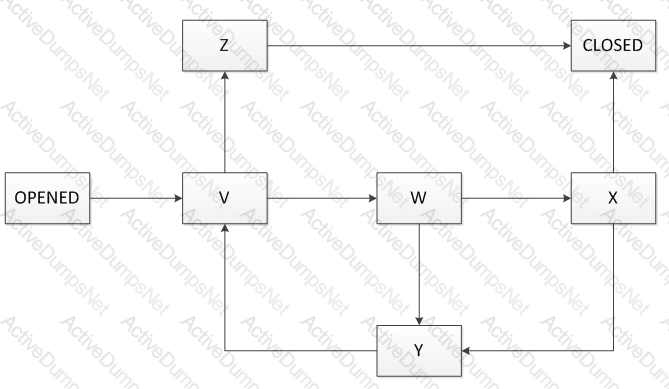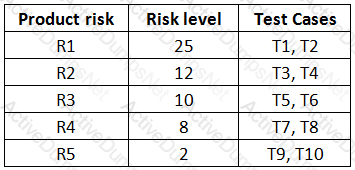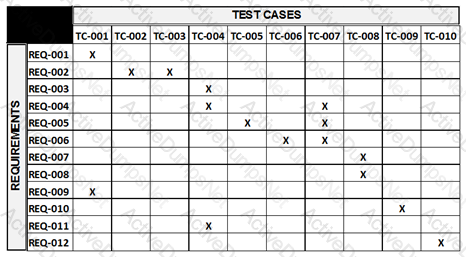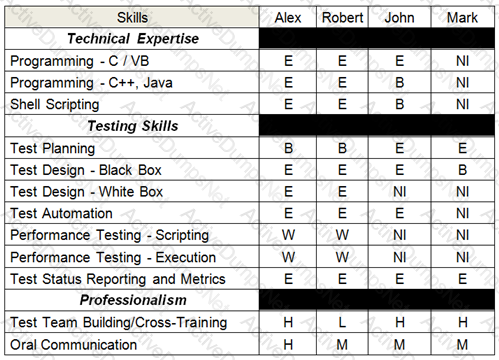BCS TM12 ISTQB-BCS Certified Tester Advanced Level- Test Manager (2012) Exam Practice Test
ISTQB-BCS Certified Tester Advanced Level- Test Manager (2012) Questions and Answers
Defect Management
Assume you are working on a defect management process to be used by a software organization to track the current status of the defects reports for several projects.
When a defect is found for investigation a defect report is created in “Opened” state that is the unique initial state. The defect report status has also a unique finale state that is the “Closed” state.
The following state transition diagram describes the states of thisdefect management process:

where only the initial (“Opened”) and final (“Closed”) states are indicated while the remaining states (V, W, X, Y, Z) have yet to be named.
Which of the following assignments would you expect to best complete the defect management process?
Number of correct responses: 1
K32 credits
Defect Management
During the system testing phase a tester from your test team observes a failure in the system under test and he/she decides to create an incident report. The incident report is currently in a “new” state, indicating it needs to be investigated.
Which THREE of the following information items can’t yet be present in the incident report?
Number of correct responses: 3
K32 credits (2 credits out of 3 credits correct, 1 credit point)
You are not confident with the assessment of the risk leveland you suspect that it will be possible to find high-priority bugs in low-risk areas.
Furthermore the period for test execution is very short. Your goal is to test all the product risks in a risk-based way, while assuring that each product risk gets at least some amount of testing.

Which of the following answers describes the best test execution schedule in this scenario?
Number of correct responses: 1
K32 credits
Assumethat the following test cases have been executed at the end of the first week of test execution: TC-001, TC-002 and TC-007. All these tests are ‘passes’.
What is the MINIMUM number of the remaining test cases that must be successfully executed to fulfillthe EX1 exit criteria?

Number of correct responses: 1
K32 credits
Reviews
Consider the following list of statements about audits and management reviews:
I.Audits are usually more effective than management reviews at finding defects
II. Audits and management reviews have the same main goals, the only difference is related to the roles and level of formality
III. A typical outcome of an audit includes observations and recommendations, corrective actions and a pass/fail assessment
IV. An audit is not the appropriate mechanism to use at the code review in order to detect defects prior to dynamic testing
Which of the following statements is true?
Number of correct responses: 1
K21 credit
Reviews
You are a Test Manager working for a software organization where reviews have never been applied. After a meeting with your managers examining a business case for reviews, (including their costs, benefits, andpotential issues), the management finally decides to adopt formal reviews for future projects.
You have been given a budget that you have spent to provide training in the review process and to introduce the review process on a pilot project.
On that pilot project the introduction of reviews has been very positive in terms of positive involvement from all the participants. All the reviews applied to different documents have been very effective for their purposes (especially at revealing defects).
Which ofthe following answers describes an important success factor for the introduction of formal reviews which is missing in this scenario?
Number of correct responses: 1
K43 credits
You are using this skills assessment spreadsheet in order to define a training development plan for your test team.
Your objective is to fill the skill gaps by having at least a teammember rated as an expert for each skill identified for the “technical expertise” and “testing skills” sections, and with the ability to train the other team members.
Considering the budget constraints you can send only one person to a training course.

Based only on the given information, which of the following answers would you expect to be the best option to achieve your objective?
Number of correct responses: 1
K43 credits
People Skills – Team Composition
Which of the following would you expect to be most likely an example of a motivatingfactor for testers?
Number of correct responses: 1
K21 credit
Improving the Testing Process
Which of the following statements about the STEP test process improvement model is true?
Number of correctresponses: 1
K21 credit
